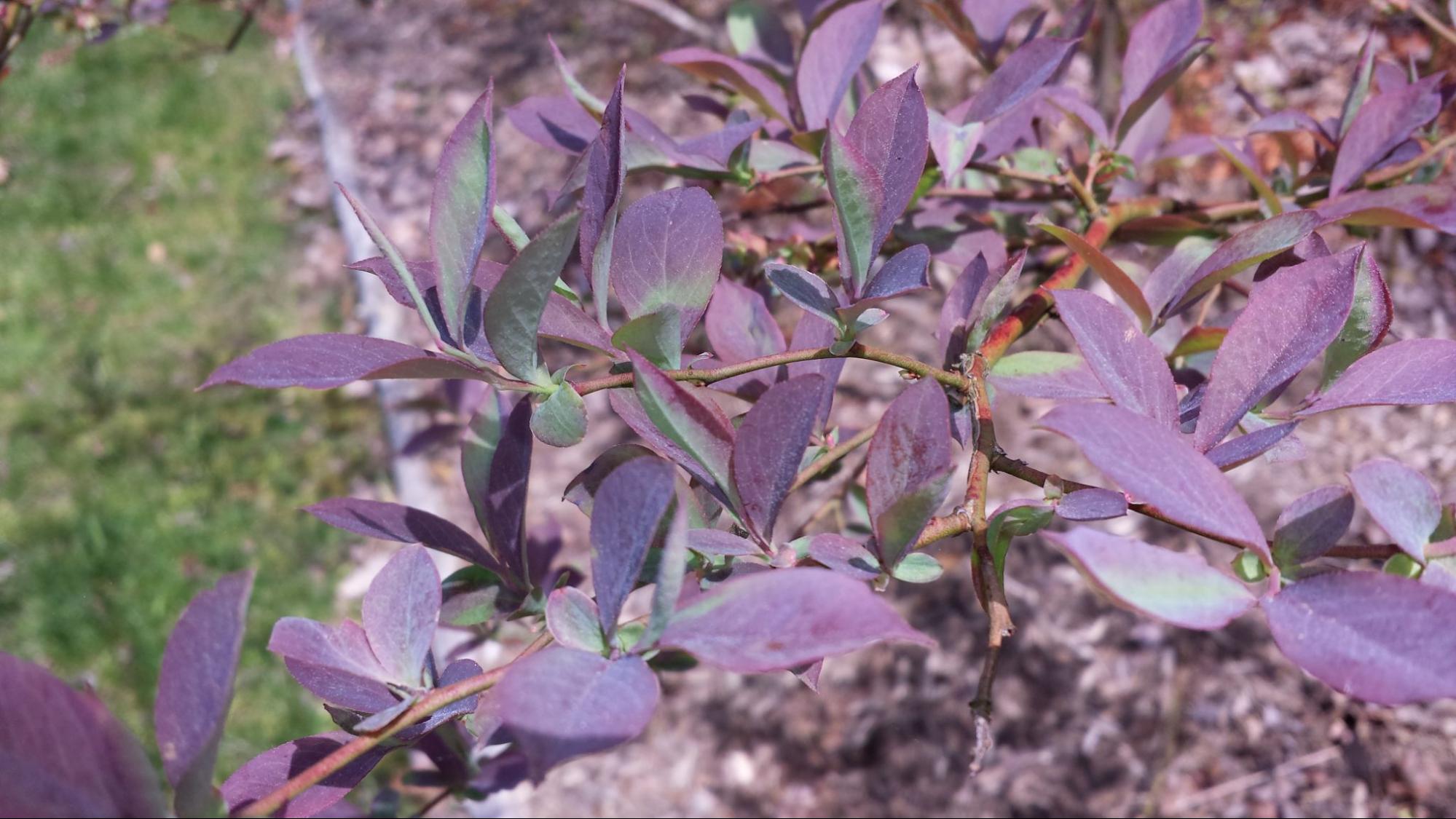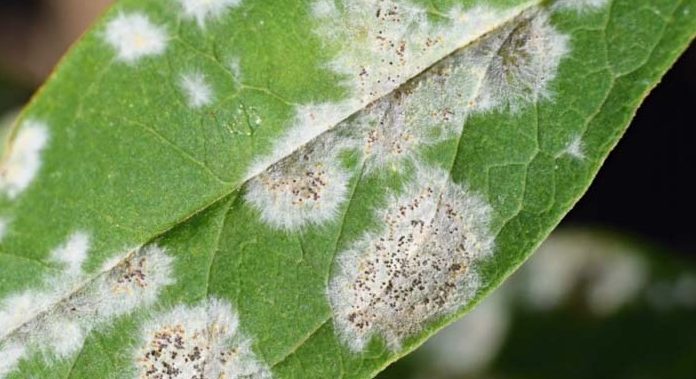A lot of people cultivate blueberry plants due to them being small in size. They are quite a delicious treat as well. But what to do if the healthy green color in them turns purple-red?
What are the causes of blueberry leaves turning purple?
Blueberry leaves turn purple when it suffers from phosphorus deficiency. The soil rarely lacks phosphorus levels. It happens due to other reasons like improper pH levels or waterlogged soil. Too much iron in the soil or fungal infections can also be the reason.
That was the high point of our conversation. Stay with us till the end to find the solutions. Let’s begin!
5 Reasons for Blueberry Leaves Turning Purple: With Solutions
Blueberry leaves turn purple for a number of reasons. Here we have described the causes and provided the remedies for them.
Reason 1: Phosphorus Deficiency
Blueberry leaves turning purple can be caused by phosphorus deficiency. Plants suffering from phosphorus deficiency turn maroon red or purple in color.
Phosphorus deficiency does not happen due to phosphorus being insufficient. Rather, it happens due to the phosphorus not being able to be in use.

The level of phosphorus in soil is sometimes not utilized properly. Some of the factors prevent it from being absorbed by plants. For example, the temperature and the pH level of the soil.
Solution:
Adding more phosphorus to the soil is never the solution. The soil usually doesn’t lack phosphorus. Rather some factors prevent the plants to absorb it.
Take note of the soil’s temperature. The root area’s temperature in the soil should not be below 60 degrees Fahrenheit. If it’s lower than that, the plant will fail to absorb enough phosphorus from the soil.
Also, the pH level of the soil should be maintained. The pH of the soil needs to be between 4.5-5.5. Otherwise, the plant will struggle to get enough phosphorus for growth.
To resolve phosphorus deficiency, a couple of factors should be monitored.
1. Conduct A Soil Test
It’s hard to pinpoint the issue among numerous possibilities. A soil test can tell you where the actual issue lies and reveal the level of phosphorus in the soil.
For blueberries, it’s recommended that the soil should contain a moderate level of phosphorus. It should be around 31-60 pounds per acre of blueberry growth field. If it’s lower than that, you can raise the level of phosphorus by adding fertilizers.
Bone meal, fish meal, sphagnum peat, powdered seaweed, manure, superphosphate, or compost are used for raising phosphorus levels.
If the phosphorus level is not the issue then move on to the following sections.
2. Consider The Temperature
There isn’t much you can do when the temperature drops too low. The ideal temperature for blueberry plants is 45 degrees Fahrenheit. They can tolerate up to 55 degrees.
In times of extreme weather, you can try growing them indoors. Otherwise, the plant might suffer from frost. Cold temperature is also a reason for the greening of calla lily flowers.
3. Check Soil pH Level
Blueberry plants require acidic soil. The soil pH needs to be between 4.5-5.0 on the pH scale. A pH greater than 5.2 means the soil becomes too alkaline.
Thus, the plant fails to take the ingredients from the soil. If the soil is too acidic that’s a problem too. You can mix the acidic soil with neutral soil to alleviate the excess acidity.
As for increasing the acidity of the soil, you can use the following ingredients-
- Coffee grounds
- Sulfur/fish bones
- Lemon juice/skins
- Pine needles
Apply sulfur or lemon juice around the plant roots. Dilute the lemon juice with water before applying. 2 tbsp of lemon juice should be mixed in 1 gallon of water.
Make sure the lemon juice doesn’t get poured into the plant’s body. Lemon juice can burn the plant’s body and even kill them.
4. Monitor The Iron Level
Soils that are rich in iron, can cause plants to suffer from phosphorus deficiency. Because iron can block the absorption of phosphorus in plants.
The moderate level of iron in soil should be between 50-100 ppm. Any higher than that is inappropriate for growing blueberry corps.
Reason 2: Over Watering
Over-watering the blueberry plants causes the leaves to turn purple or red in color. It’s one of the main causes of deterioration in plants. For example, dianthus looks dead due to over-watering.
Similarly, over-watering can cause the loss of green leaves in blueberry plants. That’s why maintaining a proper watering schedule is important.
There’s also the waterlogged issue. It happens due to a poor drainage system in the growth bed. This problem surfaces in soils that are compacted, recessed, or high in clay.
Whether you have a drainage issue or not can be determined by conducting a percolation test.
Solution:
To solve drainage issues, you’ve to apply compost in the soil every 1 or 2 months. Apply it about 2 inches in height. It helps break down the clumps in the soil.
It also absorbs water and moisture while adding more nutrients. It’s especially useful for compacted or clay soils. On the other hand, recessed soils usually benefit from a slightly raised soil surface.
Although raising the soil bed is a bit expensive, it’ll solve the waterlogging problem. No matter which type of soil your growth bed has, avoid using mulch during the well-draining.
Because it prevents the soil from air drying. Apply water when 2-4 inches of the soil surface is dry. Press the root area with your finger to check the soil for dryness.
When watering, the soil should be soaked down up to 2 feet. Because that’s how in-depth the root will be.
Because that’s how in-depth the root will be.
Reason 3: Magnesium Deficiency
Magnesium deficiency is another cause of blueberry leaves turning red or purple. Magnesium is needed for photosynthesis. Without enough magnesium in the leaves, chlorophyll production gets reduced.
As a result, the veins in the plant’s leaves will start getting reddish. Gradually, it turns the whole leaf red or reddish-purple color.
Although lack of magnesium isn’t life-threatening for blueberry plants, it affects their appearance heavily.
Solution:
For treating magnesium deficiency, it’s recommended to use Epsom salt. It is made from hydrated magnesium sulfate. Which means, the main ingredient is magnesium and sulfur.
You can also use hydrated dolomitic lime as an alternative. But the dolomitic lime is alkaline. Thus it should be used on soil that has a pH level below 4.3.
Add 2 tbsp of Epsom salt in a gallon of water. Apply the water to the soil. It’ll bring the nice green color of your blueberry plant. Additionally, your plant might get bushier.
Reason 4: General Nutrient Deficiency
Ultimately, it’s possible that your blueberry plants are simply deficient in general nutrients. It happens in soil that is waterlogged.
Solution:
Add more fertilizer to compensate for the deficiencies. Make sure to run a soil test to understand the graveness of the lackings.
For blueberry plants, using an acidic fertilizer with balanced NPK will be more useful. These types of fertilizers are rich in nitrogen, potassium, and phosphorus.
These are the main ingredients the plant needs. Additionally, you can use compost for the growth bed. It’ll both provide organic nutrients and improve water drainage.
Changing the water habit might also help. Here are a few recommendations on fertilizers.
| Balanced liquid fertilizer – Pro-Care NPK 8.8.8 | Buy Now! |
| ACID NPK 8- 15- 22 + 6% CaO + 2% MgO + TE | Buy Now! |
| ACID NPK 20-20-20 + TE | Buy Now! |
| ACID NPK 15-30-15 + TE | Buy Now! |
Reason 5: Fungal Diseases
Fungal diseases are common for blueberry plants that cause the plant to turn purple-red in color. It’s also one of the leading causes of snake plants getting yellow.
Fungal infection should be dealt with with immediate attention. Here are details on a few common fungal diseases.
Disease 1: Phomopsis Twig Blight
If the plant is infected with Phomopsis, then the buds will start to get brown. Soon, the buds will die and the brown hint will appear on the twigs of the buds.

The infection spreads as the color changes to reddish-purple throughout the plant.
Solution:
Prune the buds that are infected with Phomopsis. Also, destroy the twigs that have turned red. Avoid overhead irrigation to prevent further fungal infection.
Disease 2: Powdery Mildew
This is caused by the Erysiphe Vaccinii fungus. In the earlier days of the infection, you’ll see some white substances over the leaf’s surface.
Either on the upper or lower part of the leaf.

Solution:
Prune the plants and wait to see if the fungal disease still resides. If it’s still affected by the disease, apply fungicides that have sulfur as the main ingredient.
A heavily affected blueberry plant should be destroyed before it spreads the disease more.
Maintenance Tips
For a good harvest follow these tips-
- Control the weeds in the growth bed
- Apply net to protect from birds and insects
- Water consistently
- Nip off the flowers that appear in the first year for a larger harvest
- Maintain soil acidity
Hopefully, you’ll be blessed with a bigger harvest this time.
Frequently Asked Questions (FAQs):
How to fix yellow blueberry leaves?
Yellowing of the blueberry leaves happens due to iron deficiency. When the soil’s pH level is too high the plant can’t absorb enough iron. To resolve this matter you can apply iron chelate to your soil. This solution is temporary unless you fix the soil’s pH level.
Why are my blueberry leaves turning brown?
Blueberry leaves turn brown due to a lack of water. The soil is probably not well-drained. Also, blueberry plants growing in sandy or acidic soil can have the same problem. Adding too many pesticides can also be a reason. Chemical burns turn the leaves brown.
Why are my blueberry leaves turning red in September?
Blueberry leaves turning reddish brown in September is completely normal. It happens due to season change and there’s nothing to worry about it. Rather give enough fertilizer and water them properly.
Conclusion
Now you know why your blueberry leaves turning purple. Hopefully, you were able to detect the cause by now. If you’re still unsure, make sure to conduct a soil test.
The administrators conducting the test will be able to help you resolve it as well. Hoping for your success!
- Why Are There Still No Tomatoes in My Tomato Plants? Let’s Fix the Issue! - July 13, 2023
- Water Propagation White Stuff on Roots: Everything You Should Know! - July 11, 2023
- String of Dolphins Drying Up: Solved! - July 11, 2023
